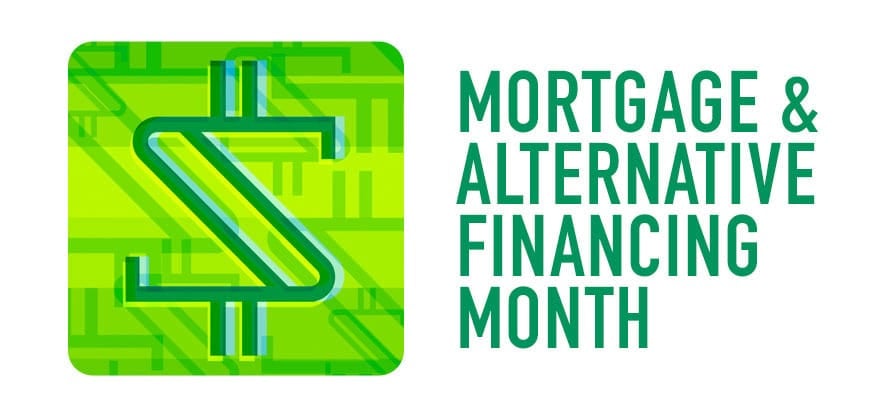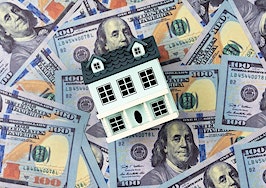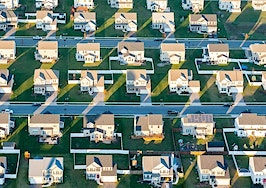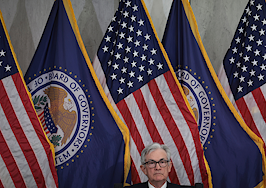In May, we’ll go deep on money and finance for a special theme month, by talking to leaders about where the mortgage market is heading and how technology and business strategies are evolving to suit the needs of buyers now. A prestigious new set of awards, called Best of Finance, debuts this month too, celebrating the leaders in this space. And subscribe to Mortgage Brief for weekly updates all year long.
Homebuyer demand for mortgages dipped last week as inventory in many markets remains scarce and rates continue to climb toward 2023 highs last seen in March, according to a weekly survey of lenders by the Mortgage Bankers Association.
The MBA’s Weekly Mortgage Applications Survey shows applications for purchase loans fell by a seasonally adjusted 4 percent last week compared to the week before and were off 30 percent from a year ago. Requests to refinance were down 5 percent week over week and 44 percent from a year ago.

Joel Kan
“Since rates have been so volatile and for-sale inventory still scarce, we have yet to see sustained growth in purchase applications,” MBA Deputy Chief Economist Joel Kan said in a statement. “Refinance activity remains limited, with the refinance index falling to its lowest level in two months and more than 40 percent below last year’s pace.”
The Optimal Blue Mortgage Market Indices, which are updated daily, show that after nosediving in March in the wake of regional bank failures, rates have resumed their climb back toward 2023 peaks.
Rates on 30-year fixed-rate conforming loans, which briefly dipped below 6 percent in early February, are now threatening to break a 2023 high of 6.84 percent registered on March 8. Rates still have a ways to go before reaching the 2022 high of 7.16 percent seen on Oct. 24.
For the week ending May 19, the MBA reported average rates for the following types of loans:
- For 30-year fixed-rate conforming mortgages (loan balances of $726,200 or less), rates averaged 6.69 percent, up from 6.57 percent the week before. With points increasing to 0.66 from 0.61 (including the origination fee) for 80 percent loan-to-value ratio (LTV) loans, the effective rate also increased.
- Rates for 30-year fixed-rate jumbo mortgages (loan balances greater than $726,200) averaged 6.57 percent, up from 6.46 percent the week before. With points increasing to 0.57 from 0.38 (including the origination fee) for 80 percent LTV loans, the effective rate also increased.
- For 30-year fixed-rate FHA mortgages, rates averaged 6.56 percent, up from 6.39 percent the week before. With points increasing to 1.24 from 0.97 (including the origination fee) for 80 percent LTV loans, the effective rate also increased.
- Rates for 15-year fixed-rate mortgages averaged 6.15 percent, up from 5.96 percent the week before. With points increasing to 0.72 from 0.68 (including the origination fee) for 80 percent LTV loans, the effective rate also increased.
- For 5/1 adjustable-rate mortgages (ARMs), rates averaged 5.73 percent, up from 5.71 percent the week before. With points increasing to 1.19 from 1.10 (including the origination fee) for 80 percent LTV loans, the effective rate also increased.
Hike, skip or pause?
Kan said recent commentary by Fed officials and uncertainty over U.S. debt ceiling negotiations are putting upward pressure on bond yields and mortgage rates.
“Investors remained attuned to the uncertainty around the U.S. debt ceiling and communication from several Federal Reserve officials last week, which sent Treasury yields higher, along with mortgage rates,” Kan said. “Economic data released over the past week have also pointed to a still-resilient economy. The housing market received positive data on new residential construction — which is seen as a key solution to the lack of housing inventory.”
A recent Zillow analysis concluded that a U.S. debt default, while unlikely, could push mortgage rates above 8 percent, raising the monthly payments when taking out a new mortgage by 22 percent.
Speaking at an economic summit Wednesday in Santa Barbara, California, Federal Reserve Gov. Christopher Waller said the question for Fed policymakers, at their June 14 meeting, will be whether to “hike, skip or pause” a campaign to raise interest rates that began last year.
Six of seven alternative measures tracked by the Fed show inflation running between 4 and more than 5 percent over the past year, far above the Fed’s long-term goal of 2 percent, Waller noted.
“I do not support stopping rate hikes unless we get clear evidence that inflation is moving down towards our 2 percent objective,” Waller said. “But whether we should hike or skip at the June meeting will depend on how the data come in over the next three weeks.”
Two other Fed inflation “hawks” have also been outspoken on their view that the Fed may not be done raising rates this year, Bloomberg reported. St. Louis Fed President Jim Bullard said Monday that he thinks two more rate increases are warranted this year, while Minneapolis Fed President Neel Kashkari has said that if the Fed skips a hike in June, it must remain prepared to raise rates in July.
(While Waller and Kashkari are voting members of the Federal Open Market Committee, which sets monetary policy, Bullard is not. Reserve Bank presidents serve one-year terms on a rotating basis).
Waller said he’s concerned core goods prices and wages aren’t retreating as much as needed. While rent increases have slowed, a rebound in the housing market is raising questions about how sustained the slowdown in rent increases will be, he said.
Housing prices “actually have less of a short-term effect on rents than one might think,” Waller said. But “this upturn in the housing market, which comes even with significantly higher mortgage rates, has raised questions about whether the benefit from the slowing in rent increases will last as long as we have been expecting.”
In their latest forecast, economists at Fannie Mae last week said they still expect a “modest recession” in the second half of this year, but conceded that April’s strong job numbers and continued pressure on wages are inconsistent with the Fed’s long-term inflation target.
Have mortgage rates peaked?

Having raised the federal funds rate 10 times since March 17, 2022, the Federal Open Market Committee has now brought its target for the benchmark federal funds rate to between 5.0 to 5.25 percent — a level last seen on the eve of the Great Recession of 2007-09.
Many bond market investors remain convinced that with signs of a recession looming, the Fed will not only be forced to stop hiking rates this year but bring them back down to keep the economy from crashing.
The CME FedWatch Tool, which monitors futures markets to gauge investor sentiment, on Wednesday was pricing in a 46 percent chance of one final Fed rate hike in June or July. But futures markets suggest that by the end of the year, there’s a 71 percent chance that the Fed will have implemented one or more rate cuts.
Forecasters agree that in the long run, mortgage rates are likely to ease this year and next.
In a May 19 forecast, MBA economists said they expect rates on 30-year fixed-rate mortgages to average 5.6 percent during the final three months of 2023 and dip below 5 percent in the fourth quarter of 2024.
In a forecast published May 10, Fannie Mae economists predicted a more gradual decline, with rates not falling below 6 percent until next year.
Get Inman’s Mortgage Brief Newsletter delivered right to your inbox. A weekly roundup of all the biggest news in the world of mortgages and closings delivered every Wednesday. Click here to subscribe.













